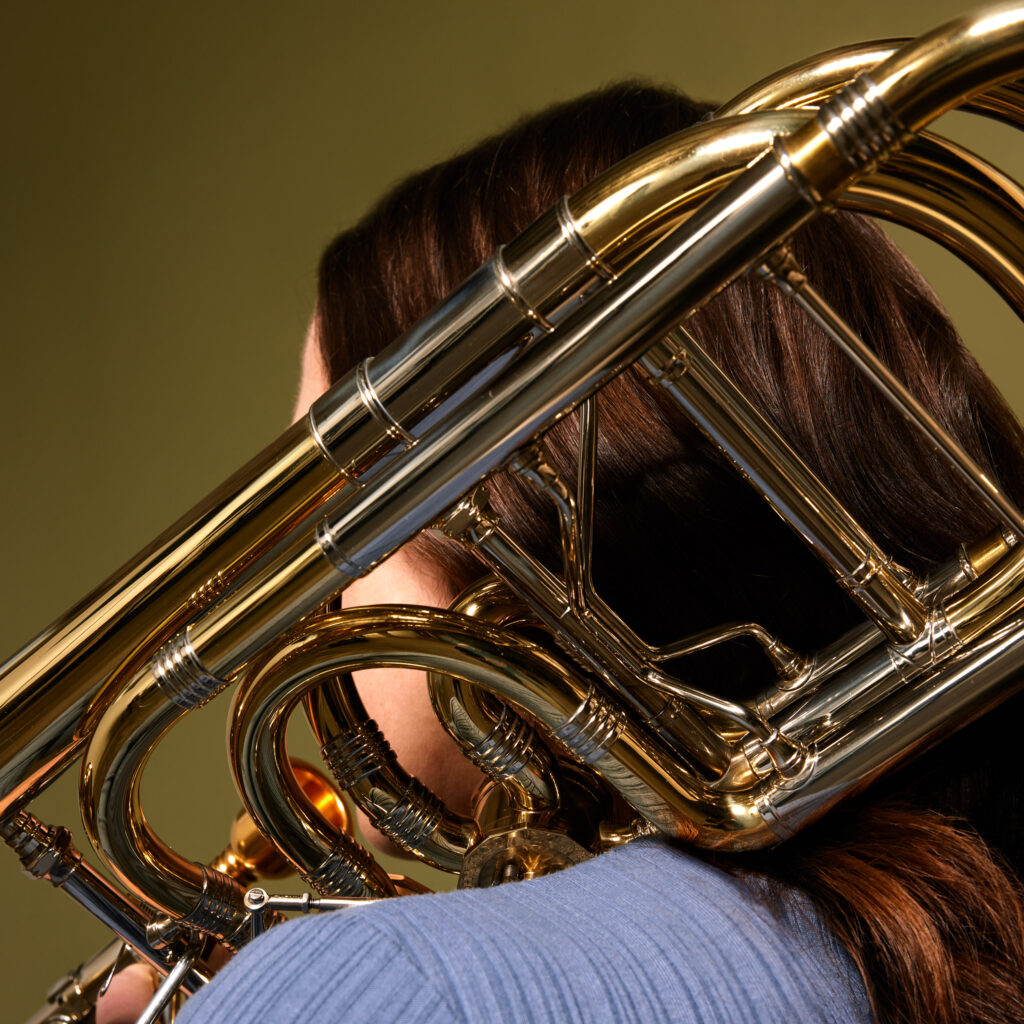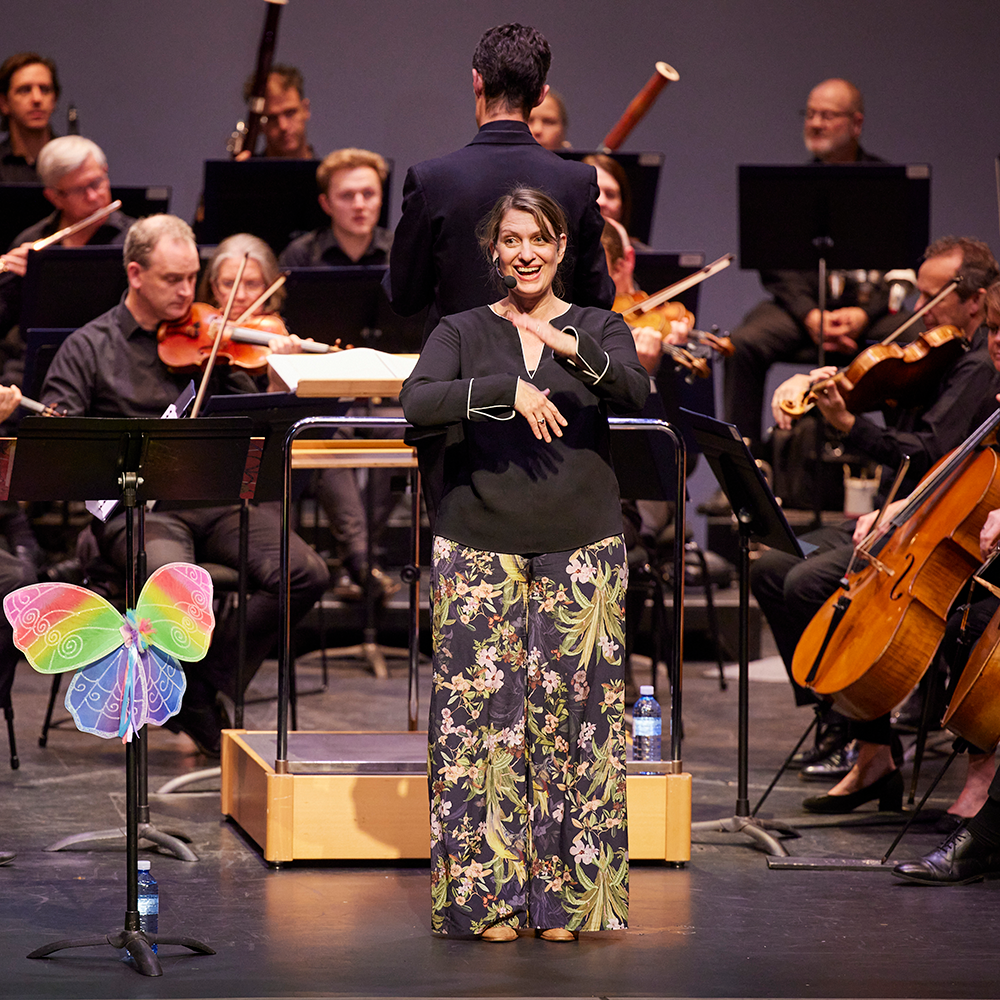Concertmasters – What’s in a name?
- Behind the Scenes

After more than a decade with the ASO, Concertmaster Natsuko Yoshimoto recently announced that the 2020 Season will be her last.
Over the past 10 years, the ASO has demonstrated great artistic vitality and quality – and Natsuko Yoshimoto has played a significant role in our success.
As Simon Lord, our Director, Artistic Planning explains, the role of Concertmaster extends far beyond performance.
The lights dim. The audience settles. The orchestral cacophony is silenced as a lone figure at the front of the First Violin section stands up and gestures for the oboist to play the concert A to tune the orchestra. Eighty musicians tune their instruments. The conductor walks onto the platform and the concert begins. For many, this familiar ritual may appear to be the singular function of a symphony orchestra’s Concertmaster. In reality, it represents the tip of the iceberg.
The Concertmaster, or if you are in the UK, the orchestra’s Leader, has a daunting job description. It is not far removed from that of the Managing Director of a Global 500 company. John Georgiadis, the former Leader of the London Symphony Orchestra, went so far as to say that ‘it is a big mistake to choose a Concertmaster just for their playing ability.’ Concertmasters must have more than just technical facility and musicianship – they are also required to be leaders and mentors.
Back to the job spec. Essential requirements of the role include: excellent leadership skills, diplomacy, flexibility, creativity, commitment, passion, resilience and a strong moral compass. Also, since the orchestral business is global, a smattering of German, Italian and Russian is useful. By any standards, it is a virtuosic skill set. And it goes without saying that the Concertmaster must be a virtuoso violinist, at the top of their game, capable of knocking out the repertoire’s dazzling solos from Rimsky-Korsakov’s Scheherazade to Strauss’s Ein Heldenleben at the drop of a hat. It is also desirable to have an inside knowledge of the forever expanding orchestral repertoire with performing experience of the symphonic canon from Mozart to Mahler, Tchaikovsky to Kats-Chernin.
A Concertmaster, along with the conductor, can define an orchestra’s sound and, in particular, its string sound. A Concertmaster’s playing, through their distinctive style of vibrato, bow speed, articulation, tone colour and chosen fingerings, can, holistically, influence the performance style of an orchestra. Together with the conductor, the Concertmaster is central in creating, developing and maintaining an ensemble’s sonic personality.
And then there is the human dimension.
Away from playing the music come other responsibilities. A symphony orchestra’s schedule is busy. Week in, week out there are different concerts, changing repertoire, new conductors and guest soloists to work with. Throughout the concert-giving year, the Concertmaster attends meetings with orchestral players, conductors and the orchestra’s management team. There are always rosters to be done, bowings to be agreed, and, after a long day of rehearsals, the private practice still needs to happen at home. The Concertmaster must lead by example, always be well-prepared and across all the crotchets, quavers and semiquavers.
In rehearsals and concerts, the Concertmaster is the crucial interface between orchestra and conductor. They can assist with cues, co-ordinate tricky transitions, clarify phrasing and support tempi. Whether the conductor is making his or her début, or, is an orchestra’s long-serving Music Director, the Concertmaster has a responsibility to be supportive whilst also representing the interests of their orchestral colleagues. For rehearsals to be productive, it is important that they run to time and are respectful, collaborative affairs. Both on and off the platform, the Concertmaster must read the room and set the tone. The role has a duality: Concertmasters are both team-players and leaders.
Pragmatism and diplomacy are essential qualities. When a conductor or soloist sets a tempo that is slightly too fast, too slow or is simply impractical, a way has to be found to negotiate a compromise. If a newly written work demands the technically impossible and its composer is at the rehearsal, the Concertmaster may need to help to find a solution to bring the music to life. If the conductor is from St Petersburg and the composer is from Hamburg that is when those good old language skills will come in handy. And sometimes a bit of humour goes a long way.
In his insightful book, The Silent Musician – Why Conducting Matters, Mark Wigglesworth, the Adelaide Symphony Orchestra’s Principal Guest Conductor, understands that the best Concertmasters ‘see their role as far more than the practical one of turning the conductor’s gestures in to a technical and musical reality. They engage in every aspect of the orchestra’s life and lead the group’s spirit as well as its performance.’ Inevitably, the Concertmaster’s mission goes way beyond the concerts. So, what’s in a name? Perhaps the title does not truly reflect the role? Good Concertmasters have eyes and ears in the back of their heads, possess the skill set of a top CEO, speak at least three different languages and play the violin like Jascha Heifetz. But they also have something else, something more elusive. Great Concertmasters, like all great leaders, are inspirational.
– Simon Lord, Director, Artistic Planning
Take a look at the concerts you can see Natsuko perform at here.




